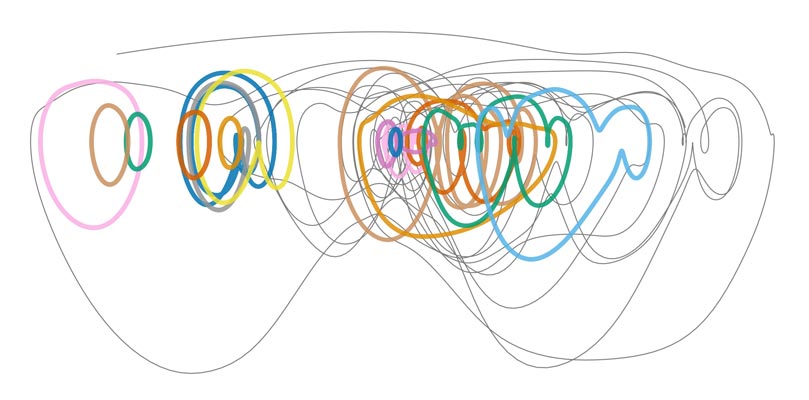June 17, 2021
Turbulent Flow Simplified
Novel method to model turbulence efficiently

When constant flows transition to turbulence exciting physics is at work. A simple model of turbulent flows is yet missing and researchers in the Hof group at the Institute of Science and Technology (IST) Austria took up this challenge. In a recent publication in Physical Review Letters, Gökhan Yalnız and Burak Budanur introduce their modeling approach based on data analysis methods pioneered by another IST Professor Herbert Edelsbrunner.
Turbulence is chaotic and, thus, characterized by persistent irregular motion. But inspecting it closer, especially through advanced computational methods, one can find recurring patterns in the motion, so-called periodic orbits. The physicists Yalnız, Hof and Budanur from the Institute of Science and Technology Austria (IST Austria) show in their newest publication that the periodic orbits can be used as the bases of a simpler turbulence model than previous ones. These orbits form loops in the abstract “state space” of the fluid along which the essential fluid properties like velocity and pressure repeat themselves periodically. The orbits’ neighborhoods are frequently revisited by the turbulence; therefore, providing a simplified way of describing the dynamics of turbulence.
In their study, the team led by Burak Budanur simulate the Navier-Stokes equation that describe fluid dynamics. However, they limit their calculations to a simple geometry with a set of symmetries. The judicious choice of computational domain reduces the number of examined parameters while maintaining the overall phenomenon. In this simplified setting, where turbulence is still exhibited, they identify 17 periodic orbits from simulated data of the fluid. Further evolution of the fluid is then compared with the period orbits. That´s the point, where Herbert Edelbrunner’s persistent homology enters the stage. The method pioneered by the IST Austria mathematician allows to quantify the similarity between periodic orbits and the path of the fluid in state space. It turns out that the new findings not only reduce the complexity from more than hundred thousand parameters to a so-called Markov process with 17 states, but they do so while reproducing the long-term behavior accurately. The findings expand thus our general understanding of turbulence as well as show a potential for new engineering applications.
Publication
Yalnız, Hof, Budanur. 2021. Coarse Graining the State Space of a Turbulent Flow Using Periodic Orbits. Physical Review Letters.
Funding information
The IST Austria project part was supported by funding from the Simons Foundation (662960, BH).



